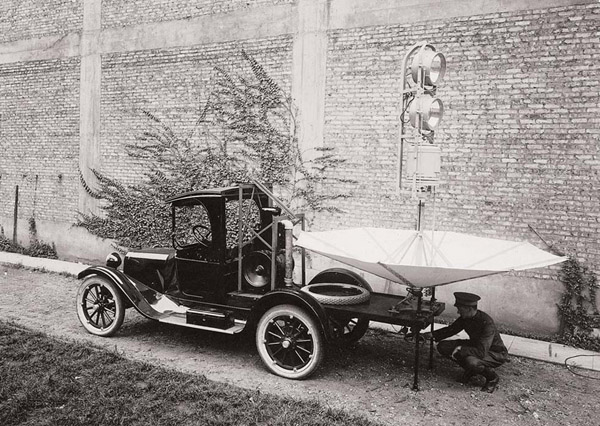Archives – Summer 2005
Photo: NAS Archives
Runway Illumination
In 1918, aviation was still in its infancy, with a number of basic problems awaiting solutions. One of these was the illumination of airfields for night landings. Work on this problem for the Army was overseen by the National Research Council through its efforts for the Science and Research Department of the Bureau of Aircraft Production.
One solution, conceived by consulting electrical engineer O. H. Mohr of the Bureau of Mines,was to mount floodlights and a horizontal, folding circular canvas reflector on the back of a truck. The reflector, shown above in the open position, was supposed to help incoming pilots orient themselves by appearing as a diffusely lit, non-glaring circular light marking the position of the landing strip. But tests of Mohr’s mobile field illuminating device at Ellington Field near Houston, Texas, in August 1918 showed the reflector to be of very little practical use. A new version of Mohr’s device, this time with the canvas reflector eliminated, was tested in November 1918 at Wilbur Wright Field in Dayton, Ohio. The modified example was found to be satisfactory and was recommended for use at Army airfields.

